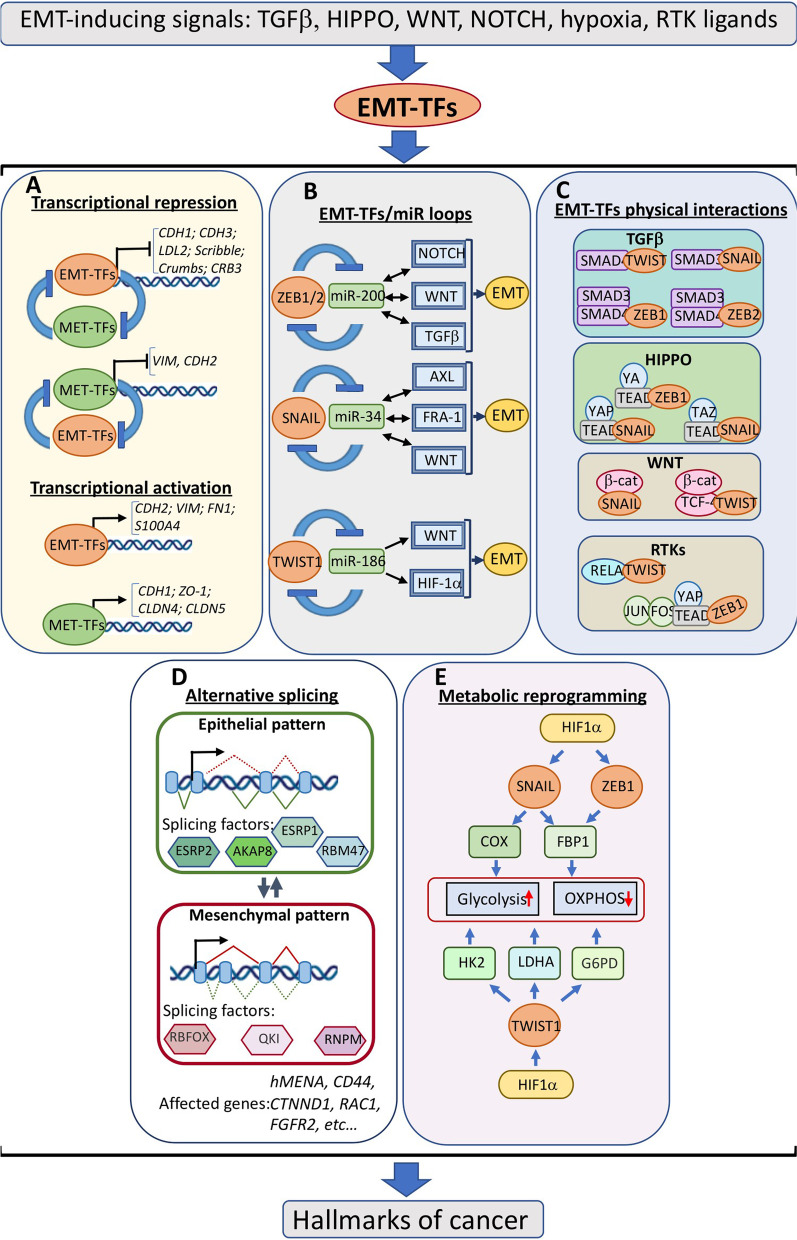Fig. 1.
EMT pathways are embedded in signalling networks in cancer cells. Various signalling pathways exemplified on the top promote EMT by activating EMT-TFs. A Transcriptional regulation of epithelial-mesenchymal plasticity. In cells undergoing EMT, EMT-TFs repress transcription of epithelial genes encoding components of various epithelial structures, such as polarity complexes and adherens junctions, and activate the expression of mesenchymal genes. MET-inducing transcription factors (MET-TFs) repress transcription of mesenchymal markers, activate epithelial transcription programs, and act in double-negative feedback loops involving EMT-TFs. B EMT-inducing signals are modified by EMT-TFs/microRNA loops. EMT-TFs and microRNAs form interrelated double-negative feedback loops which affect expression levels of certain components of EMT-inducing signalling network. C EMT-TFs physically interact with components of signalling pathways forming complexes that in turn influence target genes. D EMT/MET mutually regulate alternative splicing. EMT-TFs regulate expression of epithelial (e.g., ESRP1/2) or mesenchymal (e.g., QKI) splicing factors, which in turn determine formation of epithelial- or mesenchymal-specific protein isoforms required for the accomplishment of EMT or MET programs. E Expression of metabolic genes of glycolysis and oxidative phosphorylation pathways are controlled by EMT-TFs

